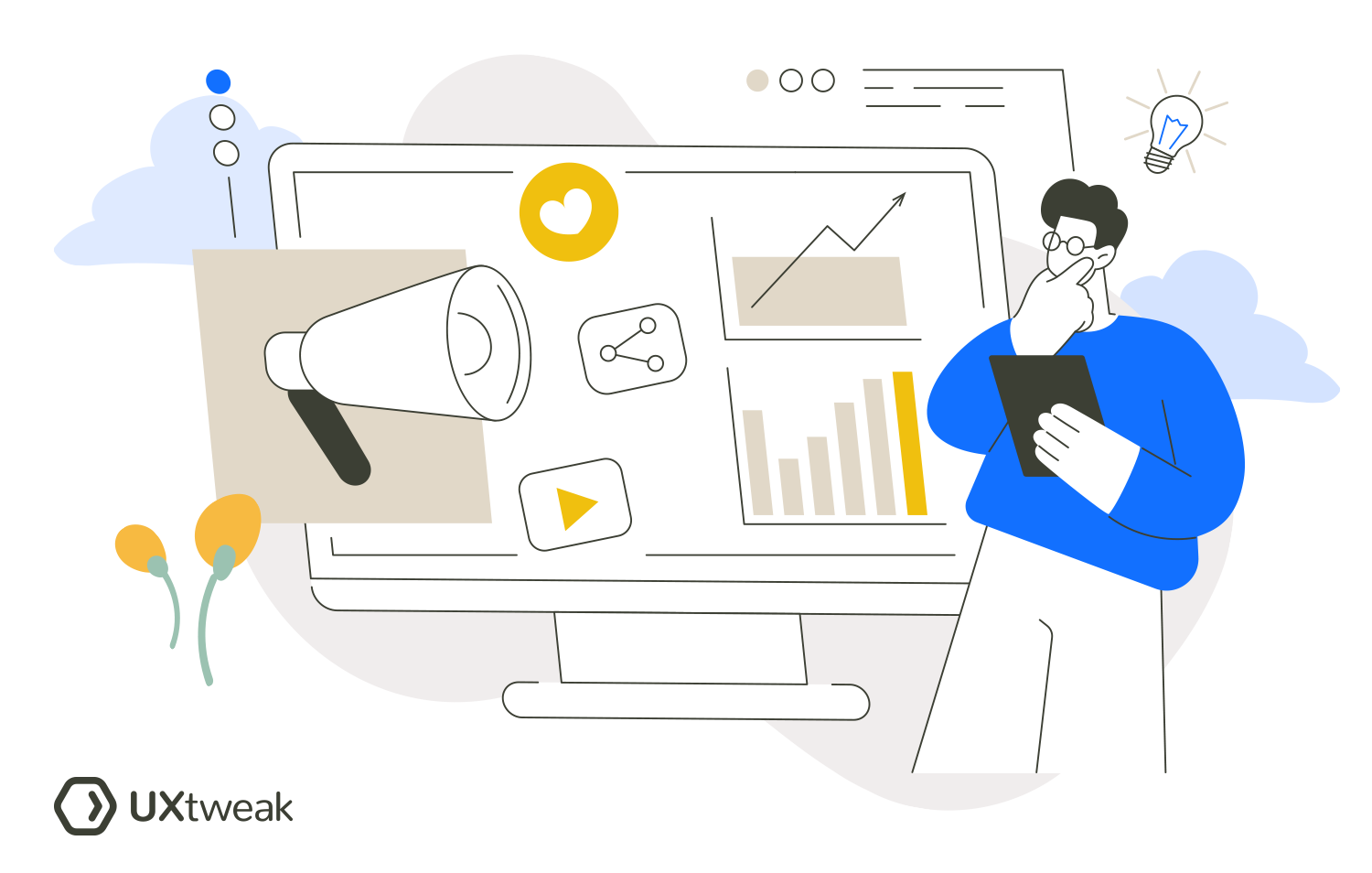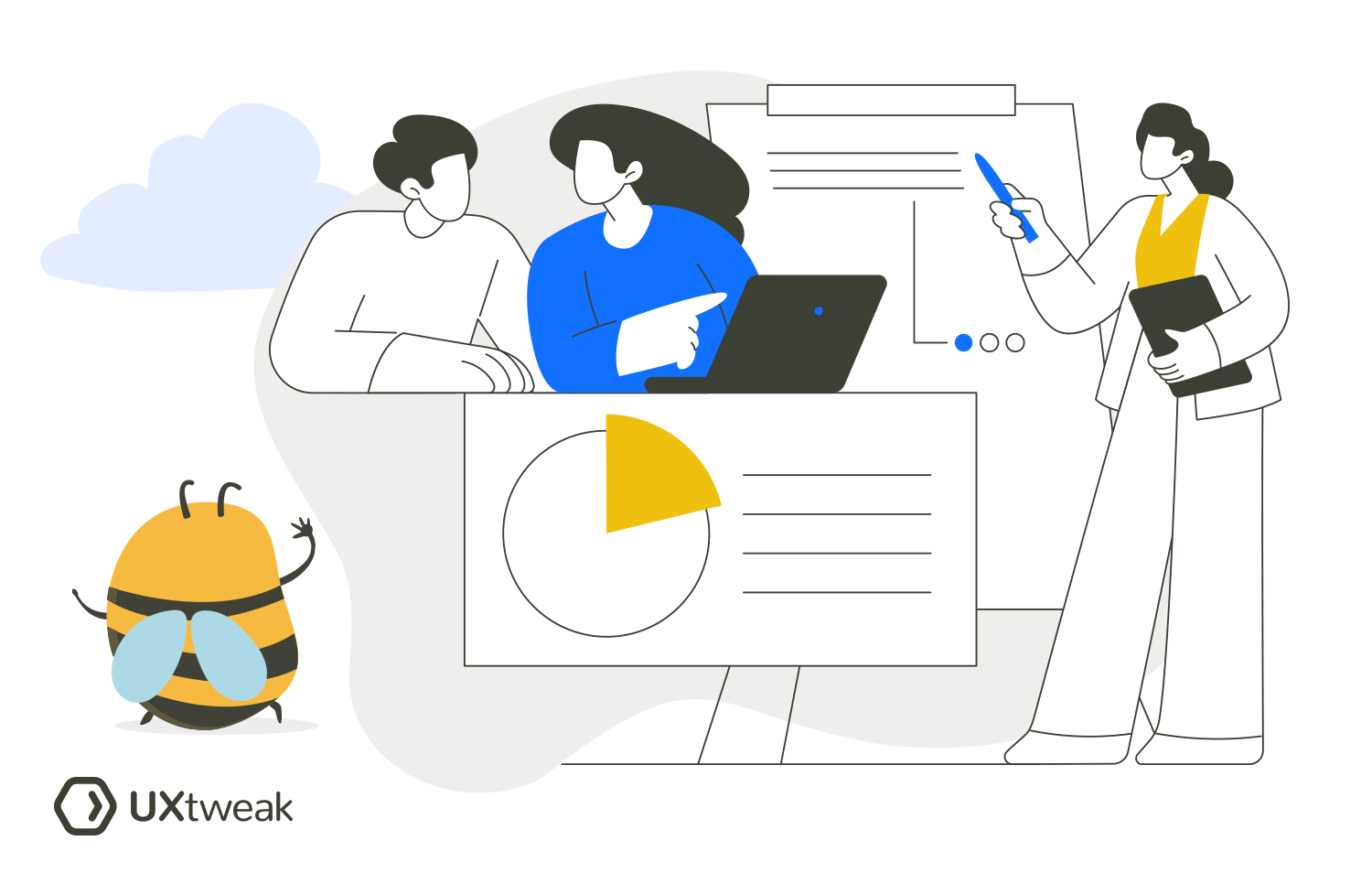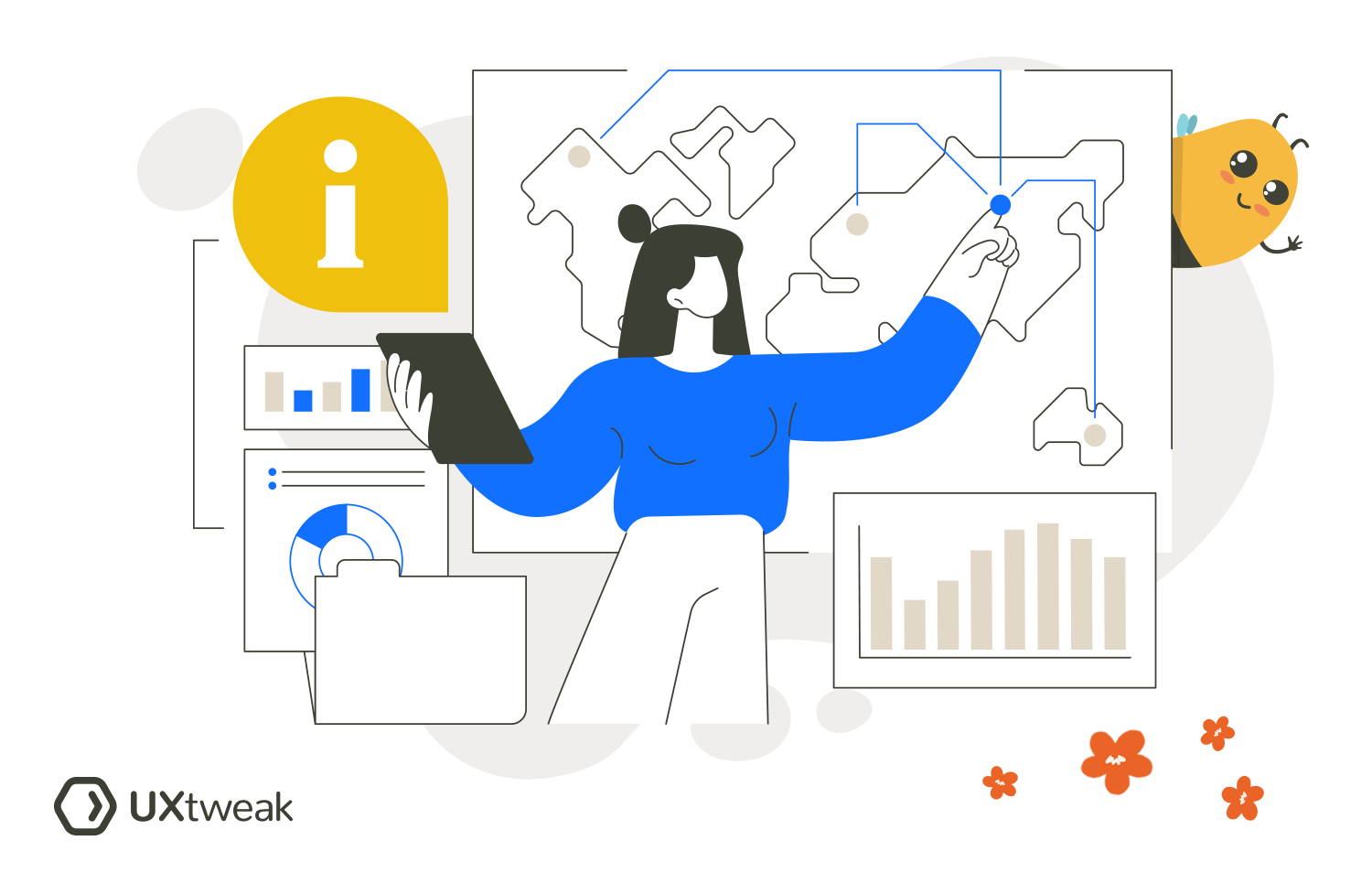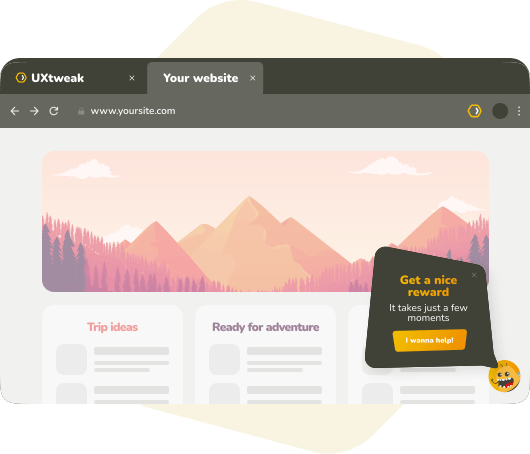With 80% of organizations expecting to compete mainly based on CX, understanding your customers and their needs is more important than ever. But how to ensure your CX strategy is based on data, not just vague assumptions about your customers? That’s where customer interviews come in.
Key takeaways:
➡️ Customer interviews are crucial for understanding user needs and improving CX
❗️ Effective interviews require preparation, active listening, and thorough analysis
✅ Different types of customer interviews serve various purposes, from discovery to validation
🧠 A structured approach ensures valuable insights and actionable feedback
💡 The number of interviews needed varies depending on your objectives and resources
What are customer interviews?
Customer interviews are a qualitative research method that involves 1 on 1 talks with your customers, to gather data and feedback for improving customer experience and the product itself.
Depending on the specific goals of each project, those interviews usually involve questions about the customer, their problems, feelings, needs, and issues with your product.
Customer interviews can be conducted either in-person or online. They can often be a part of the product discovery phase, help with concept validation and customer research, as well generally serve as a tool for gathering customer feedback and informing CX improvements.
Why do customer interviews?

Here are some of the main benefits customer interviews can bring:
- Deep understanding of customers’ needs: interviews provide qualitative, in-depth insights into your customers’ challenges and desires. You can then address those issues and find solutions for their problems by improving your product to better meet their specific needs.
- Identification of pain points: customer interviews help to uncover issues that may not be immediately apparent through other research methods. They provide additional insights into customers’ problems, that you would not get from analytics or feedback surveys.
- Validation of assumptions: with customer interviews, you have enough data to validate your assumptions about customer needs and behavior, and make data-backed decisions.
- CX improvement: direct customer feedback you get from those interviews pinpoints where customer experience needs to be improved and how you can do that.
Types of customer interviews
There are multiple types of customer interviews. Understanding how they differ will help you select the right approach for your specific needs. Here’s a short breakdown:
Exploratory customer interviews
These interviews aim to explore new areas of interest or understand customer behavior in a broad context. They are typically conducted early in the research process to gather initial insights and identify potential areas that might need more research.
For example, if your company aims to understand emerging trends in a new market, exploratory interviews can help you investigate customer behaviors and generate ideas for a successful market entry.
Customer validation interviews
Validation interviews, on the other hand, are used when you already have specific hypotheses or product concepts that you want to test. They help to ensure that the solutions you develop align with actual customer needs.
This type of customer interview usually will help to understand if your concept is actually needed, and if so, how you can improve it to solve customers’ issues more effectively.
Customer satisfaction interviews
Customer satisfaction interviews are usually part of the feedback collection process and are used to evaluate further how satisfied customers are with your product.
They give a holistic perspective of their likes and dislikes and are often used to gather additional data to complement feedback surveys or analytics.
Customer development interviews
Customer development interviews are conducted during the product development phase with a focus on refining a product based on customer feedback. They are typically used during the early stages of product development and throughout the lifecycle to ensure that the product aligns with market demands and customer expectations.
Those interviews are great for identifying potential gaps and validating ideas before investing in full-scale product development.
Customer discovery interviews
Customer discovery interviews help to identify and understand unmet needs, pain points, and opportunities within a target market.
Often being a part of the product discovery process, those interviews help to shape the product’s direction by providing insights into customer motivations and market demands.
Usability interviews
Usability interviews are used to understand how customers interact with your product and where they encounter issues.
During a usability interview, customers can provide honest feedback on the product’s design and functionality while you, as a moderator, can ask follow up questions to better understand their experience.
Customer feedback interviews
A more specific type of interviews, those are used to gather feedback about specific aspects of your product. Customer feedback interviews are often conducted after receiving negative feedback to gain a deeper understanding of the problem that the customer faces.
Customer vs. User interviews
Although the terms are often used interchangeably, there’s a difference between customer and user interviews.
Customer interviews typically focus on the decision-makers or buyers. These people may not even use the product directly but they have a direct influence over purchasing decisions. Customer interviews aim to understand their needs, pain points, what drives their buying behavior, and how you can improve their experience.
On the other hand, user interviews are centered around the actual end-users of the product, focusing on how they interact with it, their experiences, and any challenges they face while using it.
Essentially, customer interviews are all about the “why” behind the purchase, while user interviews are about the “how” of product usage. Therefore, while using the same methodology of interviews, those two are focused on understanding different groups of people.
How to conduct customer interviews?

So how to get the most out of your customer interviews? The key is to choose a structured step-by-step approach and focus on your research goals.
Here’s a breakdown of the process and everything you need to keep in mind before, during and after the interview:
Before the interview
1. Define interview objectives
Before you start recruiting participants and scheduling interviews, it’s crucial to define clear and specific objectives. Understanding what you want to achieve with the interviews will guide your entire process, from the type of questions you ask to the way you synthesize the data.
Start by asking yourself, “What do I want to learn from these interviews?” Your objectives could range from understanding user’s struggles at a specific touchpoint, discovering how customers use your product, or even validating a new feature idea. Whatever it is, make sure your goal is specific.
2. Find and recruit participants
Recruiting the right participants for your interviews is key to getting actual insights. When it comes to customer interviews, you almost always can recruit from your customer database, which makes the process a lot easier. These are the people who already have experience with your product, making them ideal candidates for providing relevant feedback.
You can reach them through email outreach, social media posts, customer support channels, surveys with follow-up invitations, in-app and website popups.
3. Prepare customer interview questions
Your questions should be open-ended and designed to elicit detailed, thoughtful responses. Avoid leading questions that may bias the responses, and instead, focus on understanding the customer’s perspective.
To craft effective and unbiased customer interview questions, you can also follow some of the tips we apply when preparing user interview questions. For example, in the video below, we discuss how to formulate questions that help avoid creating bias in your study participant. If you want to improve your customer interview questions, check out our tips and apply them to your customer interview questions.
4. Choose a customer interview platform
We recommend going for specialized research platforms, that have all functionalities in one place. This way you’ll be able to prepare, recruit for, conduct and analyze your interviews, without having to jump from one software to the other.
With UXtweak’s Live Interviews, you can seamlessly schedule, recruit, conduct, and analyze all your customer interviews.
With advanced features like transcripts, interview highlights, note-taking and a handy dashboard that stores all the data and recordings, you’ll have everything you need for conducting an insightful interview.
During the interview
5. Have dedicated note-takers
Having a dedicated note-taker allows the interviewer to focus entirely on the conversation, ensuring that nothing important is missed. The note-taker can capture key points, quotes, and any non-verbal cues that may be relevant.
Advanced interview software like UXtweak not only allows you to invite an observer and a note-taker to any interview but also enables note-taking during the recording analysis, to make it easier to capture key insights and important moments of the talk.
6. Listen actively
Active listening is more than just hearing the words a participant says. It involves understanding the underlying emotions and motivations. This requires patience, empathy, and often, a few follow-up questions to dig deeper.
7. Record the interviews
Recording interviews allows you to revisit the conversation later and ensures that you have an accurate account of what was said. This is especially helpful when analyzing the data or when you need to share findings with your team.
Rewatching the recordings can hep to catch details that weren’t noted during the live interview, such as tone or subtle hesitations that could indicate customer’s uncertainty or confusion.
Don’t forget to ask for permission before recording. Explain to the participant how the recording will be used and remind them that you’ll ensure their confidentiality.
User research platforms like UXtweak offer built-in recording features and data storing, so that you don’t have to worry about it yourself.
After the interview
8. Identify customer behavior patterns
Once all interviews are conducted, it’s time to analyze the data. Look for recurring themes, patterns, and behaviors across different interviews. This will help you identify key insights that can inform design decisions.
Affinity mapping will help you cluster related insights and behaviors together. This visual method helps in seeing the bigger picture and identifying patterns more easily. Learn how to make an affinity map in our video:
9. Synthesize the data
Synthesis involves organizing the data into actionable insights that can guide the next steps in your project. This could include developing personas, creating journey maps, or identifying key pain points and opportunities.
Summarize the interview findings in a structured format, such as a research report or a presentation, that communicates the key insights and how they should be applied.
Make sure that your presentation is visual and includes direct quotes from participants, as well as short reels from the interviews, to help better illustrate your points.
10. Share findings with the team
The final step is to share your findings with the broader team, including designers, product managers, and other stakeholders. Make a list of actionable suggestions based on your findings and explain why and in what priority they should be implemented.
This way you’ll ensure that everyone is aligned and knows the outcomes, together with next steps.
6 tips for effective customer interviews

Tip 1: Prepare follow-up questions
Apart from your usual customer interview questions, try to always have a secondary set of questions ready, to follow-up on customer’s responses. This will allow you to dive deeper into the emotional and psychological factors behind their answers.
Customers often start with rational reasons, but deeper insights come from understanding the underlying emotions that influenced their choices.
Tip 2: Use silence as a tool
After asking a question, embrace the silence. People often feel compelled to fill in the quiet with more detailed thoughts or information they wouldn’t have shared initially. This can lead to more candid and valuable responses.
Tip 3: Practice active listening
During customer interviews, show that you’re engaged in the conversation and that you’re hearing and understanding their responses. Practicing active listening. Reflect back what you’ve heard by summarizing key points or asking clarifying questions. This will help to encourage them to share more, giving a feeling that their feedback is valid and they’re being fully understood.
➡️ Learn more about active listening in our UXR Geeks podcast episode w/Indi Young: uxcon special: deep listening with Indi Young
Tip 4: Pay attention to non-verbal cues
Pay attention to body language and tone of voice, especially when discussing their problems, negative experiences, or frustrations with the product. These non-verbal cues often provide deeper insights into customers’ true feelings and can signal areas of dissatisfaction that they might not specifically talk about.
Tip 5: Dig deeper into the unexpected
If a customer says something unexpected or out of the ordinary, or something that is contrary to what you know, don’t move on too quickly. Explore this further. Ask why they feel that way or how they arrived at that conclusion. Unexpected insights like this may be daunting at first, but often lead to the most valuable feedback.
Tip 6: Clarify vague responses
While it’s important not to lead customers with your questions, it’s equally crucial to seek clarification on responses that are too broad or vague. Politely ask for examples or specifics to ensure you fully understand their perspective and can gather actionable insights. This will help to avoid misinterpretation and foster mutual understanding.
How many customer interviews are enough?
The number of customer interviews needed for your specific case depends on the research goals and the complexity of the subject matter. Generally, for qualitative research, 5-10 in-depth customer interviews are more than enough to start identifying patterns and recurring themes in customer behavior.
Sometimes one in-depth interview may be enough to understand the root of the problem, but it’s always better to conduct multiple interviews to validate your findings and ensure they represent a broader range of customer experiences.
If you’re dealing with a highly diverse customer base or a complex product, you might need to conduct more interviews. Up to 20 or more interviews in some cases are needed to capture a broader range of experiences and ensure you’re not missing critical insights.
The key is to continue interviewing until you reach “saturation,” where no new significant information is emerging from the conversations. You don’t need to aim for a specific number of interviews, but rather focus on identifying patterns and validating your assumptions.
How to choose the right customer interview software?
Having the right customer interview platform is a deal breaker when it comes to research effeciency. Of course, you might use Zoom or Google Meet for the interviews. However, they would not provide you with any necessarity features that are essential for a good customer interview.
Most specialized customer interview software offer standard functionalities, such as interview transcription and inteview scheduling. But, if you want to have a more effective interviewing process, we advise to look for customer interview tools with advance features.
For example, it would be vise to check whether you can take time-stamped notes during the interviews. Or, whether you can invite observes and note-takers, so your stakeholders can also participate in the interview process. You should also check how long the customer interview software stores interview recordings (provided it has such a feature).
We recommend you to go for customer interview software trusted by both UX and CX professionals – UXtweak. Our Live Interviews provide extensive functionalities and our support team is always there for you if you have any questions regarding the interview setup.
Conduct customer interviews with UXtweak
Conducting customer interviews is a powerful way to gain deep insights into user behavior and preferences. By carefully planning your approach, actively listening during the interviews, and thoughtfully analyzing and sharing the results, you can uncover customer insights that drive your CX strategy further.
Remember, the key to successful customer interviews is to remain curious, empathetic, and open-minded, allowing you to truly understand and address your customers’ needs.
If you’re looking for an all-in-one tool for conducting your customer interviews – check out UXtweak! Register for your UXtweak account and schedule your first interview with the help of our Live Interviews tool!






